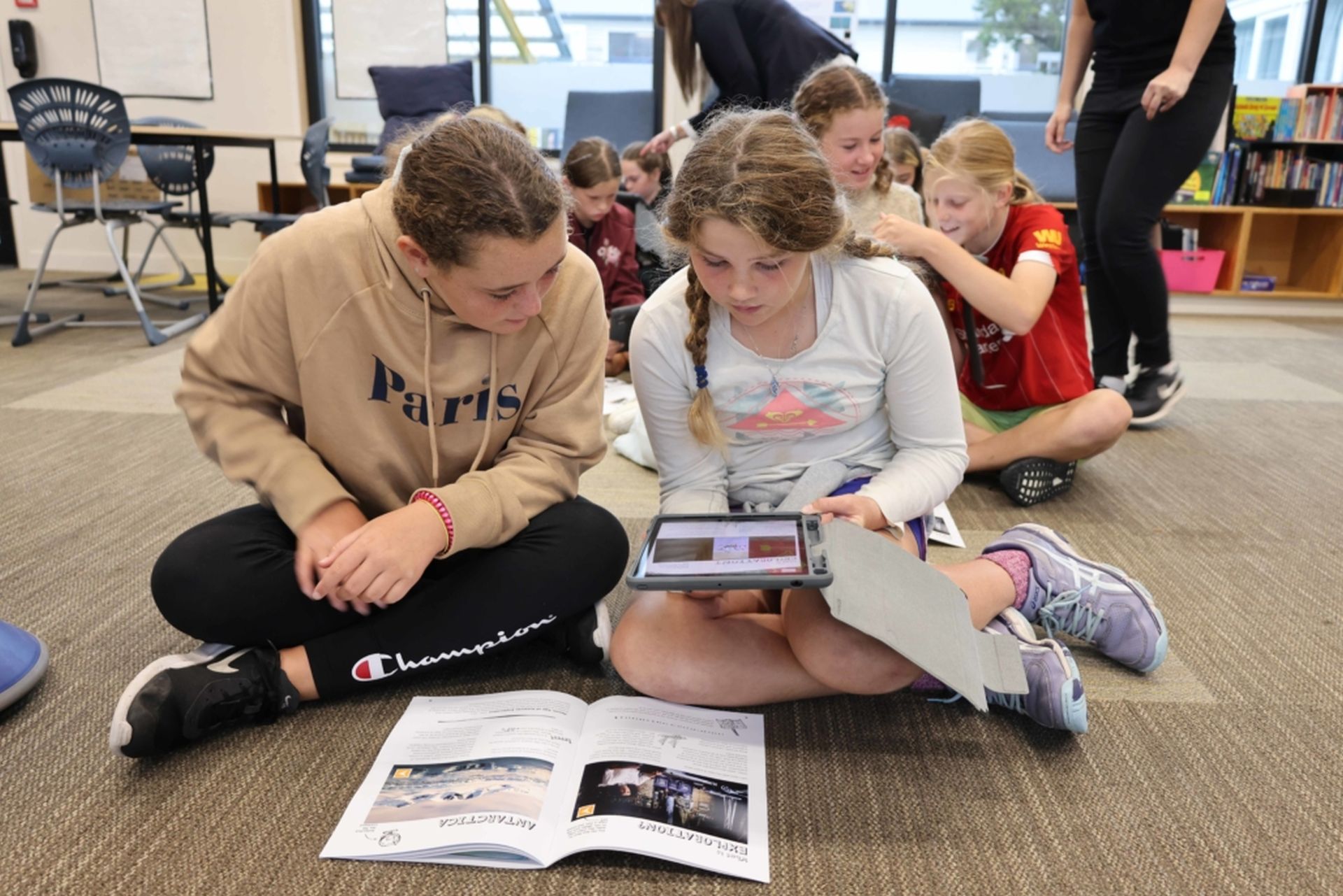University student helps make exploration of Antarctica possible – from anywhere in the world
20 year old Anzac Gallate’s been obsessed with Antarctica since he was 10 – and after a trip to the Ice with Antarctic Heritage Trust he’s helped create content for an augmented reality (AR) app so younger Kiwis can explore Antarctica without leaving the country.
“Using the app, pictures on the page come to life, like in Harry Potter. I can’t wait to see students using it to explore this incredible place. They can stand in penguin colonies, come face to face with seals, and paddle past whales. They can go from viewing 360 videos to doing crafts activities and journaling, all in the same experience.”
Anzac was among a group of young people selected to travel to the Antarctic Peninsula in March 2020 as part of the Trust’s Inspiring Explorers Expedition™. While there, he navigated icebergs while kayaking part of the Peninsula and explored glaciers and penguin colonies.
Since his return, Anzac has spent a year creating an explorer journal for the app.
“I’m hoping the journal gets kids and teens out into their own backyards. Since I was such a fan of Antarctica at a young age, I’ve been able to imagine what I would have loved to learn about and focused the journal on that.”
Anzac took inspiration from historic explorer journals for the project.
“The journal brings the concept of exploration to life – it identifies what exploration is and shares stories of historic explorers, before focusing on modern expeditions and science down on the Ice. Users are encouraged to think about venturing to new places – even if that is simply seeing their own neighbourhood in a new light. They’re then tasked with recording this in the explorer journal, just like the early polar explorers did.”
“It’s about incorporating exploration into daily life. This can be as easy as being curious so you learn about and experience something new.” says Anzac.
While in Antarctica, Anzac captured footage, including an underwater encounter with a seal, which he has incorporated into the journal. Footage like this, and still photos, emerge from the journal’s 2D pages when users hover their devices over widgets in the journal. The app was made in partnership with Staples VR.
Antarctic Heritage Trust General Manager Operations and Communications Francesca Eathorne says the project is particularly important in the context of the current pandemic.
“Given the way the world is right now, encouraging exploration in New Zealand is super important. We can’t wait to see how the journal stimulates the natural curiosity children have for their surroundings.”
The second experience in the AR app brings six items from the first huts built in Antarctica to life in 3D. The Trust cares for these huts, which were built by Carsten Borchgrevink at Cape Adare as part of its long running cold-climate conservation work (the Ross Sea Heritage Restoration Project). The project also sees the Trust care for Scott’s, Shackleton’s and Hillary’s huts.
The Cape Adare artefacts were originally conserved at a lab at Canterbury Museum in New Zealand by the Trust’s team of international experts.
The Antarctic 3D artefacts, including the world’s most famous fruitcake, a bone toothbrush and leather boots, were digitally scanned by Tim Handfield of Handfield & Bell Digitising Consultants and then turned into augmented reality by Staples VR.
Using a mobile device the artefacts can be digitally placed into the user’s own space. Bonus content such as videos, photo galleries and blogs can also be accessed that share interesting stories of the early explorers’ expeditions and the Trust’s conservation work at site today.
Francesca Eathorne says it is exciting to be able to bring the artefacts to life and share them and their stories with a broader audience.
“These artefacts connect us to the first explorers in Antarctica who, over a century ago, undertook important scientific work and exploration on behalf of humankind. Their curiosity about the world, their resilience in such a harsh environment and their passion to learn more about the world they lived in, continue to inspire today. This app enables us to keep these stories alive and we hope, encourage others to go out and explore.
Staples VR CEO Aliesha Staples says, “Being able to bring Antarctica to the world using emerging technology, such as augmented reality in a photorealistic way, makes this project not only technically challenging but incredibly important to do right.”
“We used our photogrammetry processes to develop the scans Tim captured. It has been a privilege as we know how few people get to see these artefacts and our work means that they can now be brought to life so thousands can see them around the world in the most real way.”
Download Instructions
To access, follow the below steps:
• Download from Google Play: https://play.google.com/store/apps/details?id=com.StaplesVR.AntarcticHeritageTrustAR
• Download from App Store: https://apps.apple.com/us/app/antarctic-heritage-trust-ar/id1542538066
• Click here to download a free explorer journal
For more information please contact:
Jo Scott
021 883 123
jo@greatpr.co.nz




